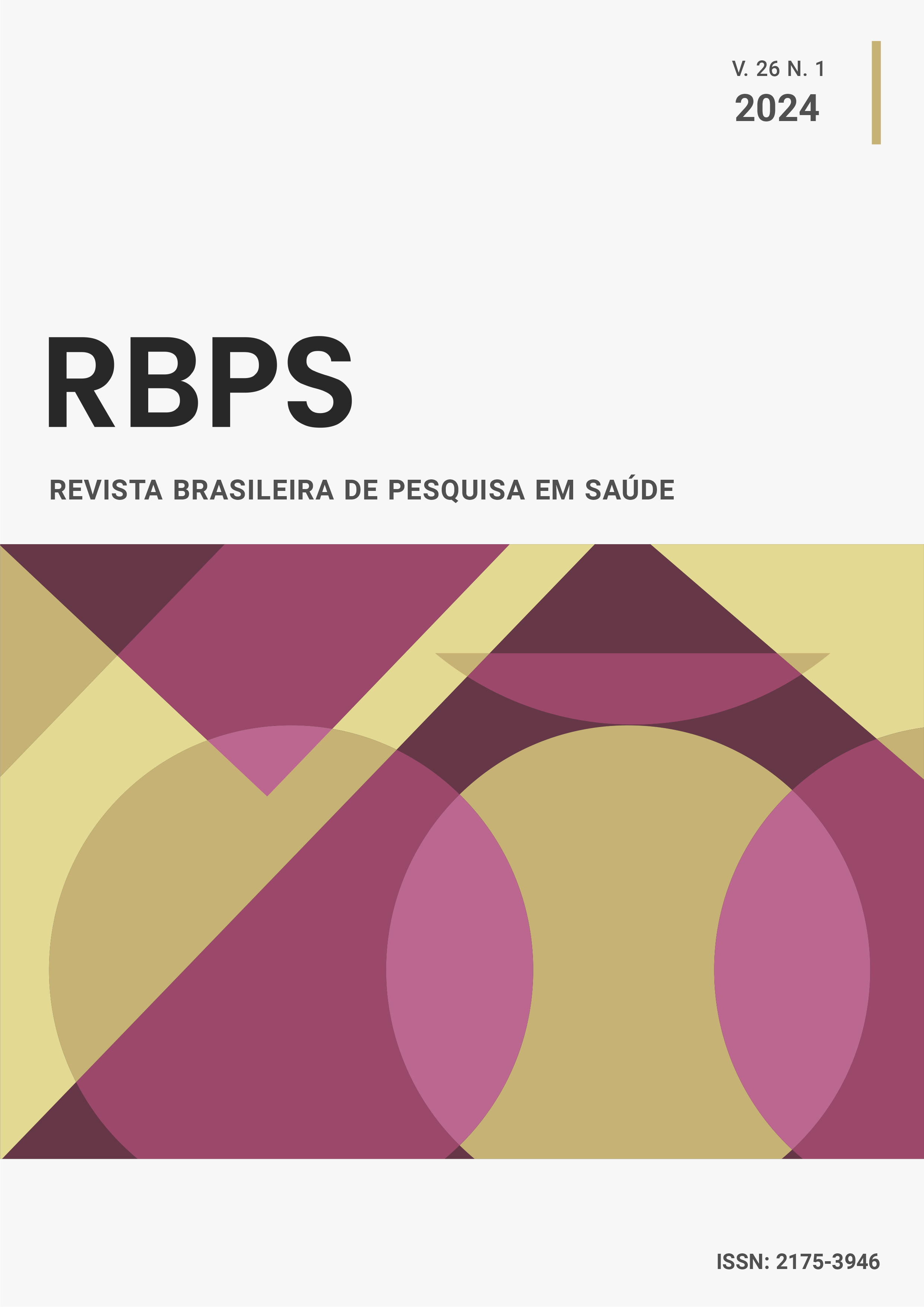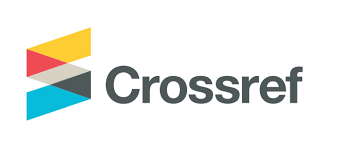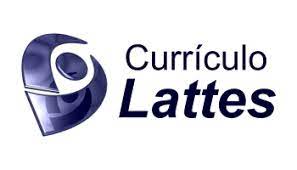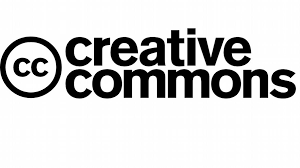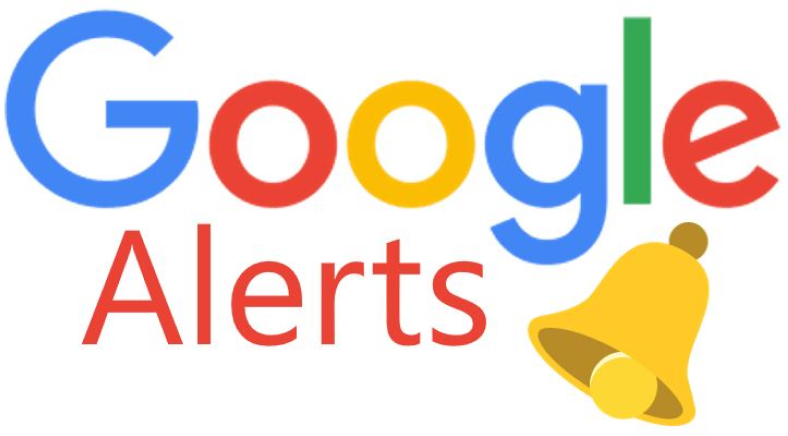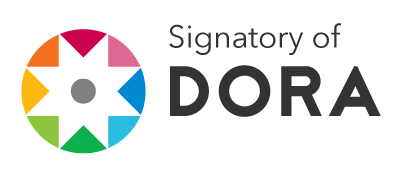Neuromodulação não-invasiva
uma revisão narrativa sobre aplicabilidade clínica, acesso ao tratamento e direções futuras
DOI:
https://doi.org/10.47456/rbps.v26i1.46477Palavras-chave:
Estimulação Magnética Transcraniana, Estimulação Transcraniana por Corrente Contínua, Estimulação do Nervo Vago, ReabilitaçãoResumo
Introdução: A neuromodulação não invasiva (NmNI) abrange um conjunto de técnicas que modulam a atividade neuronal sem necessidade de cirurgia ou implantes. O interesse nessas técnicas vem crescendo, especialmente em relação à sua aplicabilidade e à translação de resultados de protocolos de pesquisa para a prática clínica. Com isso, surgem questões sobre a segurança dos procedimentos, seus efeitos fisiológicos e os mecanismos de ação cerebral. Objetivo: Discutir a aplicabilidade, os efeitos, as barreiras de acesso ao tratamento e explorar direções futuras para pesquisa e prática clínica. Métodos: Trata-se de uma revisão narrativa da literatura, incluindo ensaios clínicos, revisões sistemáticas, meta-análises e artigos de opinião, com pesquisas nas bases de dados PubMed, Scopus, Google Scholar e Web of Science. Discussão: As técnicas de NmNI tendem a ser menos invasivas, mais seguras e acessíveis do que intervenções neurocirúrgicas, apresentando-se como uma alternativa às estratégias farmacológicas, com poucos efeitos colaterais. Aspectos como portabilidade, escalabilidade e custo-benefício, além do potencial para uso doméstico, devem ser considerados. Embora amplamente usadas em reabilitação, ainda é necessário padronizar os parâmetros de aplicação e ampliar o acesso a toda a população. Conclusão: As pesquisa futuras em NmNI devem focar na padronização de protocolos, no aprofundamento das bases neurobiológicas e na expansão para novos contextos clínicos. Uma vez que o acesso ao tratamento é limitado por barreiras financeiras, geográficas e educacionais, torna-se essencial a criação de políticas que garantam sua inclusão na saúde pública.
Downloads
Referências
Kesikburun S. Non-invasive brain stimulation in rehabilitation. Turk J Phys Med Rehabil. 2022 Mar 1;68(1):1-8. doi: 10.5606/tftrd.2022.10608. PMID: 35949977; PMCID: PMC9305642.
Guleyupoglu B, Schestatsky P, Edwards D, Fregni F, Bikson M. Classification of methods in transcranial electrical stimulation (tES) and evolving strategy from historical approaches to contemporary innovations. J Neurosci Methods. 2013 Oct 15;219(2):297-311. doi: 10.1016/j.jneumeth.2013.07.016. Epub 2013 Aug 14. PMID: 23954780; PMCID: PMC3833074.
Salehpour F, Majdi A, Pazhuhi M, Ghasemi F, Khademi M, Pashazadeh F, et al. Transcranial photobiomodulation improves cognitive performance in young healthy adults: a systematic review and meta-analysis. Photobiomodul Photomed Laser Surg. 2019 Oct;37(10):635-643. doi: 10.1089/photob.2019.4673. Epub 2019 Sep 24. PMID: 31549906; PMCID: PMC6818490.
Zhang J, Wang M, Alam M, Zheng YP, Ye F, Hu X. Effects of non-invasive cervical spinal cord neuromodulation by trans-spinal electrical stimulation on cortico-muscular descending patterns in upper extremity of chronic stroke. Front Bioeng Biotechnol. 2024 Mar 21;12:1372158. doi: 10.3389/fbioe.2024.1372158. PMID: 38576448; PMCID: PMC10991759.
Beisteiner R, Lozano A, Di Lazzaro V, George MS, Hallett M. Clinical recommendations for non-invasive ultrasound neuromodulation. Brain Stimul. 2024 Jul-Aug;17(4):890-895. doi: 10.1016/j.brs.2024.07.013. Epub 2024 Jul 29. PMID: 39084519.
Miterko LN, Baker KB, Beckinghausen J, Bradnam LV, Cheng MY, Cooperrider J, et al. Consensus paper: experimental neurostimulation of the cerebellum. Cerebellum. 2019 Dec;18(6):1064-1097. doi: 10.1007/s12311-019-01041-5. PMID: 31165428; PMCID: PMC6867990.
Rossini PM, Burke D, Chen R, Cohen LG, Daskalakis Z, Di Iorio R, et al. Non-invasive electrical and magnetic stimulation of the brain, spinal cord, roots and peripheral nerves: basic principles and procedures for routine clinical and research application. An updated report from an I.F.C.N. Committee. Clin Neurophysiol. 2015 Jun;126(6):1071-1107. doi: 10.1016/j.clinph.2015.02.001. Epub 2015 Feb 10. PMID: 25797650; PMCID: PMC6350257.
Badran BW, Dowdle LT, Mithoefer OJ, LaBate NT, Coatsworth J, Brown JC, et al. Neurophysiologic effects of transcutaneous auricular vagus nerve stimulation (taVNS) via electrical stimulation of the tragus: a concurrent taVNS/fMRI study and review. Brain Stimul. 2018 May-Jun;11(3):492-500. doi: 10.1016/j.brs.2017.12.009. Epub 2017 Dec 29. PMID: 29361441; PMCID: PMC6487660.
McGeoch PD. Can vestibular stimulation be used to treat obesity?: Vestibular stimulation targeting the otoliths could rebalance energy homeostasis to trigger a leaner body habitus and thus treat metabolic syndrome. Bioessays. 2019 Feb;41(2). doi: 10.1002/bies.201800197. Epub 2019 Jan 7. PMID: 30614540.
Garcia-Isidoro S, Castellanos-Sanchez VO, Iglesias-Lopez E, Perpiña-Martinez S. Invasive and non-invasive electrical neuromodulation in trigeminal nerve neuralgia: a systematic review and meta-analysis. Curr Neuropharmacol. 2021;19(3):320-333. doi: 10.2174/1570159X18666200729091314. PMID: 32727329; PMCID: PMC8033962.
Gerges ANH, Williams EER, Hillier S, Uy J, Hamilton T, Chamberlain S, et al. Clinical application of transcutaneous auricular vagus nerve stimulation: a scoping review. Disabil Rehabil. 2024 Feb 16:1-31. doi: 10.1080/09638288.2024.2313123. Epub ahead of print. PMID: 38362860.
Huo C, Xu G, Xie H, Chen T, Shao G, Wang J, et al. Functional near-infrared spectroscopy in non-invasive neuromodulation. Neural Regen Res. 2024 Jul 1;19(7):1517-1522. doi: 10.4103/1673-5374.387970. Epub 2023 Nov 8. PMID: 38051894; PMCID: PMC10883499.
Cruciani A, Mancuso M, Sveva V, Maccarrone D, Todisco A, Motolese F, et al. Using TMS-EEG to assess the effects of neuromodulation techniques: a narrative review. Front Hum Neurosci. 2023 Aug 14;17:1247104. doi: 10.3389/fnhum.2023.1247104. PMID: 37645690; PMCID: PMC10461063.
Haider A, Elghazawy NH, Dawoud A, Gebhard C, Wichmann T, Sippl W, et al. Translational molecular imaging and drug development in Parkinson’s disease. Mol Neurodegener. 2023 Feb 10;18(1):11. doi: 10.1186/s13024-023-00600-z. PMID: 36759912; PMCID: PMC9912681.
D’Arcy RCN, Greene T, Greene D, Frehlick Z, Fickling SD, Campbell N, et al. Portable neuromodulation induces neuroplasticity to re-activate motor function recovery from brain injury: a high-density MEG case study. J Neuroeng Rehabil. 2020 Dec 1;17(1):158. doi: 10.1186/s12984-020-00772-5. PMID: 33261623; PMCID: PMC7708191.
Khan MNA, Ghafoor U, Yoo HR, Hong KS. Acupuncture enhances brain function in patients with mild cognitive impairment: evidence from a functional-near infrared spectroscopy study. Neural Regen Res. 2022 Aug;17(8):1850-1856. doi: 10.4103/1673-5374.332150. PMID: 35017448; PMCID: PMC8820726.
McKendrick R, Parasuraman R, Ayaz H. Wearable functional near infrared spectroscopy (fNIRS) and transcranial direct current stimulation (tDCS): expanding vistas for neurocognitive augmentation. Front Syst Neurosci. 2015 Mar 9;9:27. doi: 10.3389/fnsys.2015.00027. PMID: 25805976; PMCID: PMC4353303.
Vucic S, Stanley Chen KH, Kiernan MC, Hallett M, Benninger DH, Di Lazzaro V, et al. Clinical diagnostic utility of transcranial magnetic stimulation in neurological disorders. Updated report of an IFCN committee. Clin Neurophysiol. 2023 Jun;150:131-175. doi: 10.1016/j.clinph.2023.03.010. Epub 2023 Mar 29. PMID: 37068329; PMCID: PMC10192339.
Spampinato DA, Ibanez J, Rocchi L, Rothwell J. Motor potentials evoked by transcranial magnetic stimulation: interpreting a simple measure of a complex system. J Physiol. 2023 Jul;601(14):2827-2851. doi: 10.1113/JP281885. Epub 2023 Jun 8. PMID: 37254441; PMCID: PMC10952180.
Jannati A, Oberman LM, Rotenberg A, Pascual-Leone A. Assessing the mechanisms of brain plasticity by transcranial magnetic stimulation. Neuropsychopharmacology. 2023 Jan;48(1):191-208. doi: 10.1038/s41386-022-01453-8. Epub 2022 Oct 5. PMID: 36198876; PMCID: PMC9700722.
Wagner T, Valero-Cabre A, Pascual-Leone A. Noninvasive human brain stimulation. Annu Rev Biomed Eng. 2007;9:527-65. doi: 10.1146/annurev.bioeng.9.061206.133100. PMID: 17444810.
Nitsche MA, Paulus W. Excitability changes induced in the human motor cortex by weak transcranial direct current stimulation. J Physiol. 2000 Sep 15;527(Pt 3):633-9. doi: 10.1111/j.1469-7793.2000.t01-1-00633.x. PMID: 10990547; PMCID: PMC2270099.
Areas FZS, Areas GPT, Moll Neto R. Giovanni Aldini and his contributions to non-invasive brain stimulation. Arq Neuropsiquiatr. 2020;78(11).
Creutzfeld OD, Fromm GH, Kapp H. Influência das correntes CC transcorticais na atividade neuronal cortical. Neurol Exp. 1962;5:436-52.
Bindman LJ, Lippold OCJ, Redfearn JWT. Ação de breves correntes polarizadoras no córtex cerebral do rato: Durante o fluxo de corrente e na produção de efeitos posteriores duradouros. J Physiol. 1964;172:369-82.
Artola A, Brocher S, Singer W. Diferentes limiares dependentes de voltagem para induzir depressão de longo prazo e potenciação de longo prazo em fatias do córtex visual de ratos. Nature. 1990;347:69-72.
Moriwaki A. Correntes polarizadoras aumentam o acúmulo de AMP cíclico induzido por noradrenalina no córtex cerebral de ratos. Brain Res. 1991;544:248-52.
Malenka RC, Nicoll RA. Potenciação de longo prazo – uma década de progresso? Science. 1999;285:1870-4.
Wagner T, Rushmore J, Eden U, Valero-Cabre A. Biophysical foundations underlying TMS: setting the stage for an effective use of neurostimulation in the cognitive neurosciences. Cortex. 2009 Oct;45(9):1025-34. doi: 10.1016/j.cortex.2008.10.002. PMID: 19027896; PMCID: PMC3417820.
Peinemann A, Lehner C, Mentschel C, Munchau A, Conrad B, Siebner HR. Subthreshold 5-Hz repetitive transcranial magnetic stimulation of the human primary motor cortex reduces intracortical paired-pulse inhibition. Neurosci Lett. 2000;296:21-4.
Maeda F, Keenan JP, Tormos JM, Topka H, Pascual-Leone A. Interindividual variability of the modulatory effects of repetitive transcranial magnetic stimulation on cortical excitability. Exp Brain Res. 2000;133:425-30.
Chen R, Classen J, Gerloff C, Celnik P, Wassermann EM, Hallett M, Cohen LG. Depression of motor cortex excitability by low-frequency transcranial magnetic stimulation. Neurology. 1997;48:1398-403.
Di Lazzaro V, Dileone M, Pilato F, Capone F, Musumeci G, Ranieri F, et al. Modulation of motor cortex neuronal networks by rTMS: comparison of local and remote effects of six different protocols of stimulation. J Neurophysiol. 2011 May;105(5):2150-6. doi: 10.1152/jn.00781.2010. PMID: 21346213.
Kirkovski M, Donaldson PH, Do M, Speranza BE, Albein-Urios N, Oberman LM, Enticott PG. A systematic review of the neurobiological effects of theta-burst stimulation (TBS) as measured using functional magnetic resonance imaging (fMRI). Brain Struct Funct. 2023 May;228(3-4):717-49. doi: 10.1007/s00429-023-02634-x. PMID: 37072625; PMCID: PMC10113132.
Park JH. Reliability of theta burst stimulation as a neuromodulation tool. J Neurophysiol. 2022 Jun 1;127(6):1532-4. doi: 10.1152/jn.00507.2021. PMID: 35544758.
Qiu S, Wang S, Peng W, Yi W, Zhang C, Zhang J, He H. Continuous theta-burst stimulation modulates resting-state EEG microstates in healthy subjects. Cogn Neurodyn. 2022 Jun;16(3):621-31. doi: 10.1007/s11571-021-09726-6. PMID: 35603056; PMCID: PMC9120322.
Thompson SL, O’Leary GH, Austelle CW, Gruber E, Kahn AT, Manett AJ, Short B, Badran BW. A review of parameter settings for invasive and non-invasive vagus nerve stimulation (VNS) applied in neurological and psychiatric disorders. Front Neurosci. 2021 Jul 13;15:709436. doi: 10.3389/fnins.2021.709436. PMID: 34326720; PMCID: PMC8313807.
Jiang N, Wei J, Li G, Wei B, Zhu FF, Hu Y. Effect of dry-electrode-based transcranial direct current stimulation on chronic low back pain and low back muscle activities: A double-blind sham-controlled study. Restor Neurol Neurosci. 2020;38(1):41-54. doi: 10.3233/RNN-190922. PMID: 31683491.
Goggins E, Mitani S, Tanaka S. Clinical perspectives on vagus nerve stimulation: present and future. Clin Sci (Lond). 2022 May 13;136(9):695-709. doi: 10.1042/CS20210507. PMID: 35536161; PMCID: PMC9093220.
Butt MF, Albusoda A, Farmer AD, Aziz Q. The anatomical basis for transcutaneous auricular vagus nerve stimulation. J Anat. 2020 Apr;236(4):588-611. doi: 10.1111/joa.13122. PMID: 31742681; PMCID: PMC7083568.
Badran BW, Brown JC, Dowdle LT, Mithoefer OJ, LaBate NT, Coatsworth J, et al. Tragus or cymba conchae? Investigating the anatomical foundation of transcutaneous auricular vagus nerve stimulation (taVNS). Brain Stimul. 2018 Jul-Aug;11(4):947-8. doi: 10.1016/j.brs.2018.06.003. PMID: 29895444; PMCID: PMC6607436.
Peuker ET, Filler TJ. The nerve supply of the human auricle. Clin Anat. 2002 Jan;15(1):35-7. doi: 10.1002/ca.1089. PMID: 11835542.
Kreisberg E, Esmaeilpour Z, Adair D, Khadka N, Datta A, Badran BW, et al. High-resolution computational modeling of the current flow in the outer ear during transcutaneous auricular Vagus Nerve Stimulation (taVNS). Brain Stimul. 2021 Nov-Dec;14(6):1419-30. doi: 10.1016/j.brs.2021.09.001. PMID: 34517143; PMCID: PMC8608747.
Peng X, Baker-Vogel B, Sarhan M, Short EB, Zhu W, Liu H, et al. Left or right ear? A neuroimaging study using combined taVNS/fMRI to understand the interaction between ear stimulation target and lesion location in chronic stroke. Brain Stimul. 2023 Jul-Aug;16(4):1144-53. doi: 10.1016/j.brs.2023.07.050. PMID: 37517466.
Fallgatter AJ, Neuhauser B, Herrmann MJ, Ehlis AC, Wagener A, Scheuerpflug P, et al. Far field potentials from the brain stem after transcutaneous vagus nerve stimulation. J Neural Transm (Vienna). 2003 Dec;110(12):1437-43. doi: 10.1007/s00702-003-0087-6. PMID: 14666414.
Farmer AD, Strzelczyk A, Finisguerra A, Gourine AV, Gharabaghi A, Hasan A, et al. International Consensus Based Review and Recommendations for Minimum Reporting Standards in Research on Transcutaneous Vagus Nerve Stimulation (Version 2020). Front Hum Neurosci. 2021 Mar 23;14:568051. doi: 10.3389/fnhum.2020.568051. PMID: 33854421; PMCID: PMC8040977.
RoaFiore L, Meyer T, Peixoto T, Irazoqui P. Label-Free Functional Imaging of Vagus Nerve Stimulation-Evoked Potentials at the Cortical Surface. Res Sq [Preprint]. 2024 May 2.3.rs-4295137. doi: 10.21203/rs.3.rs-4295137/v1. Update in: NPJ Biosens. 2024;1(1):11. doi: 10.1038/s44328-024-00012-z. PMID: 38746403; PMCID: PMC11092866.
Bunday KL, Perez MA. Motor recovery after spinal cord injury enhanced by strengthening corticospinal synaptic transmission. Curr Biol. 2012 Dec 18;22(24):2355-61. doi: 10.1016/j.cub.2012.10.046. PMID: 23200989; PMCID: PMC3742448.
Brown JC, Higgins ES, George MS. Synaptic Plasticity 101: The Story of the AMPA Receptor for the Brain Stimulation Practitioner. Neuromodulation. 2022 Dec;25(8):1289-98. doi: 10.1016/j.neurom.2021.09.003. PMID: 35088731; PMCID: PMC10479373.
George MS, Lisanby SH, Avery D, et al. Terapia diária de estimulação magnética transfrontal esquerda para transtorno depressivo maior: um ensaio randomizado controlado por sham. Psiquiatria Arch Gen. 2010;67(5):507-16.
Mantovani A, Pavlicova M, Avery D, et al. Long-term efficacy of repeated daily prefrontal transcranial magnetic stimulation (rTMS) in treatment-resistant depression. Depress Anxiety. 2012;29(10):883-90.
Appelbaum LG, Shenasa MA, Stolz L, Daskalakis Z. Synaptic plasticity and mental health: methods, challenges and opportunities. Neuropsychopharmacology. 2023 Jan;48(1):113-20. doi: 10.1038/s41386-022-01370-w. PMID: 35810199; PMCID: PMC9700665.
Corp DT, Bereznicki HGK, Clark GM, Youssef GJ, Fried PJ, Jannati A, et al. Large-scale analysis of interindividual variability in single and paired-pulse TMS data. Clin Neurophysiol. 2021 Oct;132(10):2639-53. doi: 10.1016/j.clinph.2021.06.014. PMID: 34344609.
Shin SS, Pelled G. Novel Neuromodulation Techniques to Assess Interhemispheric Communication in Neural Injury and Neurodegenerative Diseases. Front Neural Circuits. 2017 Mar 9;11:15. doi: 10.3389/fncir.2017.00015. PMID: 28337129; PMCID: PMC5343068.
Bandeira ID, Lins-Silva DH, Barouh JL, Faria-Guimarães D, Dorea-Bandeira I, Souza LS, et al. Neuroplasticity and non-invasive brain stimulation in the developing brain. Prog Brain Res. 2021;264:57-89. doi: 10.1016/bs.pbr.2021.04.003. PMID: 34167665.
Lefaucheur JP, Aleman A, Baeken C, Benninger DH, Brunelin J, Di Lazzaro V, et al. Evidence-based guidelines on the therapeutic use of repetitive transcranial magnetic stimulation (rTMS): An update (2014-2018). Clin Neurophysiol. 2020 Feb;131(2):474-528. doi: 10.1016/j.clinph.2019.11.002.
Sreeraj VS, Arumugham SS, Venkatasubramanian G. Clinical Practice Guidelines for the Use of Transcranial Direct Current Stimulation in Psychiatry. Indian J Psychiatry. 2023 Feb;65(2):289-96. doi: 10.4103/indianjpsychiatry.indianjpsychiatry_496_22. PMID: 37063621; PMCID: PMC10096202.
Lefaucheur JP, Antal A, Ayache SS, Benninger DH, Brunelin J, Cogiamanian F, et al. Evidence-based guidelines on the therapeutic use of transcranial direct current stimulation (tDCS). Clin Neurophysiol. 2017 Jan;128(1):56-92. doi: 10.1016/j.clinph.2016.10.087. PMID: 27866120.
Shi X, Zhao L, Luo H, Deng H, Wang X, Ren G, et al. Transcutaneous Auricular Vagal Nerve Stimulation Is Effective for the Treatment of Functional Dyspepsia: A Multicenter, Randomized Controlled Study. Am J Gastroenterol. 2024 Mar 1;119(3):521-31. doi: 10.14309/ajg.0000000000002548. PMID: 37787432.
Okdahl T, Kufaishi H, Kornum D, Bertoli D, Krogh K, Knop K, et al. Transcutaneous vagus nerve stimulation has no anti-inflammatory effect in diabetes. Sci Rep. 2024 Sep 9;14(1):21042. doi: 10.1038/s41598-024-72139-y. PMID: 39251831; PMCID: PMC11385211.
Jiang Y, Cao Z, Ma H, Wang G, Wang X, Wang Z, et al. Auricular vagus nerve stimulation exerts anti-inflammatory effects and immune regulatory function in a 6-OHDA model of Parkinson’s disease. Neurochem Res. 2018;43:2155–64. doi: 10.1007/s11064-018-2639-z.
Caravaca AS, Gallina AL, Tarnawski L, Shavva VS, Colas RA, Dalli J, et al. Vagus nerve stimulation promotes resolution of inflammation by a mechanism that involves Alox15 and requires the α7nAChR subunit. Proc Natl Acad Sci U S A. 2022 May 31;119(22). doi: 10.1073/pnas.2023285119. PMID: 35622894; PMCID: PMC9295760.
Rossi S, Hallett M, Rossini PM, Pascual-Leone A; Safety of TMS Consensus Group. Safety, ethical considerations, and application guidelines for the use of transcranial magnetic stimulation in clinical practice and research. Clin Neurophysiol. 2009 Dec;120(12):2008-39. doi: 10.1016/j.clinph.2009.08.016. PMID: 19833552.
Rossi S, Antal A, Bestmann S, Bikson M, Brewer C, Brockmöller J, et al. Safety and recommendations for TMS use in healthy subjects and patient populations, with updates on training, ethical and regulatory issues: expert guidelines. Clin Neurophysiol. 2021;132(1):269–306. doi: 10.1016/j.clinph.2020.12.003. PMID: 33414004.
Najib U, Horvath JC. Transcranial Magnetic Stimulation (TMS) Safety Considerations and Recommendations. In: Rotenberg A, Horvath J, Pascual-Leone A, editors. Transcranial Magnetic Stimulation. Neuromethods, vol 89. New York: Humana Press; 2014.
Horvath JC, Perez JM, Forrow L, Fregni F, Pascual-Leone A. Transcranial magnetic stimulation: a historical evaluation and future prognosis of therapeutically relevant ethical concerns. J Med Ethics. 2011 Mar;37(3):137-43. doi: 10.1136/jme.2010.039966. PMID: 21106996.
Kumar R, Chen R, Ashby P. Safety of transcranial magnetic stimulation in patients with implanted deep brain stimulators. Mov Disord. 1999;14(1):157-8. doi: 10.1002/1531-8257(199901)14:1<157::aid-mds1014>3.0.co;2-4. PMID: 9918342.
Redgrave J, Day D, Leung H, Laud PJ, Ali A, Lindert R, et al. Safety and tolerability of transcutaneous vagus nerve stimulation in humans; a systematic review. Brain Stimul. 2018 Nov-Dec;11(6):1225-38. doi: 10.1016/j.brs.2018.08.010. PMID: 30217648.
Kim AY, Marduy A, de Melo PS, Gianlorenco AC, Kim CK, Choi H, et al. Safety of transcutaneous auricular vagus nerve stimulation (taVNS): a systematic review and meta-analysis. Sci Rep. 2022 Dec 21;12(1):22055. doi: 10.1038/s41598-022-25864-1. PMID: 36543841; PMCID: PMC9772204.
Yap JYY, Keatch C, Lambert E, Woods W, Stoddart PR, Kameneva T. Critical Review of Transcutaneous Vagus Nerve Stimulation: Challenges for Translation to Clinical Practice. Front Neurosci. 2020 Apr 28;14:284. doi: 10.3389/fnins.2020.00284. PMID: 32410932; PMCID: PMC7199464.
Antal A, Alekseichuk I, Bikson M, Brockmöller J, Brunoni AR, Chen R, et al. Low intensity transcranial electric stimulation: Safety, ethical, legal regulatory and application guidelines. Clin Neurophysiol. 2017 Sep;128(9):1774-809. doi: 10.1016/j.clinph.2017.06.001. PMID: 28709880; PMCID: PMC5985830.
Zis P, Shafique F, Hadjivassiliou M, Blackburn D, Venneri A, Iliodromiti S, et al. Safety, Tolerability, and Nocebo Phenomena During Transcranial Magnetic Stimulation: A Systematic Review and Meta-Analysis of Placebo-Controlled Clinical Trials. Neuromodulation. 2020 Apr;23(3):291-300. doi: 10.1111/ner.12946. PMID: 30896060.
Salehinejad MA, Ghanavati E, Glinski B, Hallajian AH, Azarkolah A. A systematic review of randomized controlled trials on efficacy and safety of transcranial direct current stimulation in major neurodevelopmental disorders: ADHD, autism, and dyslexia. Brain Behav. 2022 Sep;12(9). doi: 10.1002/brb3.2724. PMID: 35938945; PMCID: PMC9480913.
Ekhtiari H, Tavakoli H, Addolorato G, Baeken C, Bonci A, Campanella S, et al. Transcranial electrical and magnetic stimulation (tES and TMS) for addiction medicine: A consensus paper on the present state of the science and the road ahead. Neurosci Biobehav Rev. 2019 Sep;104:118-40. doi: 10.1016/j.neubiorev.2019.06.007. PMID: 31271802; PMCID: PMC7293143.
Tan C, Qiao M, Ma Y, Luo Y, Fang J, Yang Y. The efficacy and safety of transcutaneous auricular vagus nerve stimulation in the treatment of depressive disorder: A systematic review and meta-analysis of randomized controlled trials. J Affect Disord. 2023 Sep 15;337:37-49. doi: 10.1016/j.jad.2023.05.048. PMID: 37230264.
Costa V, Gianlorenço AC, Andrade MF, Camargo L, Menacho M, Arias Avila M, et al. Transcutaneous vagus nerve stimulation effects on chronic pain: systematic review and meta-analysis. Pain Rep. 2024 Aug 7;9(5). doi: 10.1097/PR9.0000000000001171. PMID: 39131814; PMCID: PMC11309651.
Isaacson SH, Peckham E, Tse W, Waln O, Way C, Petrossian MT, et al. Prospective Home-use Study on Non-invasive Neuromodulation Therapy for Essential Tremor. Tremor Other Hyperkinet Mov (N Y). 2020 Aug 14;10:29. doi: 10.5334/tohm.59. PMID: 32864188; PMCID: PMC7427656.
Corrêa FI, Carneiro Costa G, Leite Souza P, Marduy A, Parente J, Ferreira da Cruz S, et al. Additive effect of transcranial direct current stimulation (tDCS) in combination with multicomponent training on elderly physical function capacity: a randomized, triple blind, controlled trial. Physiother Theory Pract. 2023 Nov 2;39(11):2352-65. doi: 10.1080/09593985.2022.2081638. PMID: 35619246.
Mussigmann T, Bardel B, Lefaucheur JP. Resting-state electroencephalography (EEG) biomarkers of chronic neuropathic pain: A systematic review. Neuroimage. 2022 Sep;258:119351. doi: 10.1016/j.neuroimage.2022.119351. PMID: 35659993.
Downloads
Publicado
Edição
Seção
Licença
Copyright (c) 2024 Revista Brasileira de Pesquisa em Saúde/Brazilian Journal of Health Research

Este trabalho está licenciado sob uma licença Creative Commons Attribution-NonCommercial-NoDerivatives 4.0 International License.
A Revista Brasileira de Pesquisa em Saúde (RBPS) adota a licença CC-BY-NC 4.0, o que significa que os autores mantêm os direitos autorais de seus trabalhos submetidos à revista. Os autores são responsáveis por declarar que sua contribuição é um manuscrito original, que não foi publicado anteriormente e que não está em processo de submissão em outra revista científica simultaneamente. Ao submeter o manuscrito, os autores concedem à RBPS o direito exclusivo de primeira publicação, que passará por revisão por pares.
Os autores têm autorização para firmar contratos adicionais para distribuição não exclusiva da versão publicada pela RBPS (por exemplo, em repositórios institucionais ou como capítulo de livro), desde que seja feito o devido reconhecimento de autoria e de publicação inicial pela RBPS. Além disso, os autores são incentivados a disponibilizar seu trabalho online (por exemplo, em repositórios institucionais ou em suas páginas pessoais) após a publicação inicial na revista, com a devida citação de autoria e da publicação original pela RBPS.
Assim, de acordo com a licença CC-BY-NC 4.0, os leitores têm o direito de:
- Compartilhar — copiar e redistribuir o material em qualquer suporte ou formato;
- Adaptar — remixar, transformar, e criar a partir do material.
O licenciante não pode revogar estes direitos desde que você respeite os termos da licença. De acordo com os termos seguintes:
- Atribuição — Você deve dar o crédito apropriado, prover um link para a licença e indicar se mudanças foram feitas. Você deve fazê-lo em qualquer circunstância razoável, mas de maneira alguma que sugira ao licenciante a apoiar você ou o seu uso.
- Não Comercial — Você não pode usar o material para fins comerciais.
- Sem restrições adicionais — Você não pode aplicar termos jurídicos ou medidas de caráter tecnológico que restrinjam legalmente outros de fazerem algo que a licença permita.

